TrekNews.net has written before about the best entries in Star Trek’s storied yet divisive video game history. For every gem that takes advantage of the medium to tell a great Star Trek story, there seem to be two that failed the franchise’s high expectations. This checkered past isn’t totally surprising: how would a company make a game based on a property that covers many different aspects; namely, exploration, diplomacy, and yes, action set pieces? Such an endeavor is… well, bold.
Topping TrekNews.net’s list of best Star Trek games is Elite Force, a first-person action game revolving around the Hazard Team, an elite squad of commandos stationed on Voyager as they made their way home from the Delta Quadrant. While one might not consider an action game as being prime Star Trek material, as Elite Force proved 17 years ago, that was indeed the case. Of course, there’s a reason why this game is the highest-ranked Star Trek game, sitting at a comfortable 86 on Metacritic.
However, reviews only tell part of the story.
I endeavored to discover why exactly Elite Force became such a well-respected Star Trek game. After all, this is an important aspect for Star Trek in the mainstream media. Video games have been around for a while, and the industry only gets more popular each year. To have a reliable presence on the video game scene is something that benefits any property. For a franchise that has inspired much of the technology and vision behind video games, and especially virtual reality’s recent emergence onto the tech scene, it is important that fans can point to one Star Trek game or another and say, “that right there is good Star Trek.” Elite Force is one of few titles to do that.
More than that though, the reasons for writing this article are personal for me. As a kid, I played Elite Force for what seemed like years on end, and it became one of The Video Games of My Childhood. I was captivated by its story and Voyager itself, and I had a blast, well, blasting aliens. 17 years after Elite Force’s release, I replayed the game for the first time, and the experience was even more special. Besides bathing in the nostalgia of playing as Ensign Munro, I was able to take a critical look at the game and see exactly why it ranks among Star Trek’s best game entries.
Hailing Frequencies Open
Elite Force takes place in Voyager’s sixth season, a time when the crew has had their share of hostile encounters with various Delta Quadrant races. (For you diehards, the game’s stardate indicates the plot takes place between the episodes “Live Fast and Prosper” and “Muse.” Thanks Memory Alpha!) To respond to these threats, Tuvok creates the Hazard Team. Players control either a male or female Ensign Munro, and after an attack by an alien ship, Voyager gets transported to an alien graveyard. Stuck fighting the Borg, Malons, Klingons, Hirogen, and a new species, the Etherians, Munro and the Hazard Team ultimately defend Voyager from the Vohrsoth, a creature controlling the Forge, the device that created the alien graveyard.
To help tell the story behind the game, I contacted Brian Pelletier, Elite Force’s game director. Nowadays, Pelletier has his hand in multiple projects, including work at Arch Virtual, Creative Kingdoms, and Human Head Studios. But back then as director, Pelletier was the person responsible for overseeing just about every aspect of game development. However, heading the creation of Elite Force is one of numerous roles he’s had in the industry. In 1992, he helped build the studio that would go on to create Elite Force and many other titles: Raven Software. In these early years, he was a game designer, focusing on art design and animation for many projects. However, after publisher Activision acquired Raven Software in 1997, things really kicked into high gear for Pelletier. For the next 13 years, he would work on several high-profile projects, including a couple X-Men games, Heretic 2, Call of Duty: Black Ops, Star Wars Jedi Knight 2: Jedi Outcast, and of course, Star Trek Voyager: Elite Force. 1998’s Heretic 2, the first game Raven Software made after Activision’s acquisition, was a milestone for Pelletier. It was the first title where he was game director, an experience he would draw on for Elite Force even though his background was mainly in art design. However, as with any game studio, and especially one of Raven Software’s small size, the input of his team was invaluable.
Making a Star Trek Game
“I remember the challenge for our team to develop a Star Trek shooter was that Voyager and much of the Star Trek franchise was not about fast-paced action and gun shooting,” recalled Pelletier. “We really did feel challenged to create a game that shooter fans would like, but also wanted to feel like you were playing in an episode or movie that fans could embrace. We did feel pressure on how to balance the narrative cerebral part of Star Trek with a shooter. This fine line became a very conscious effort on the team’s part to blend these into a cohesive fun game experience.
Authentic, immersive, cerebral, and encompassing. These are words that first spring to mind for Pelletier when thinking of Elite Force. To create this authentic shooter experience, Pelletier and his team drew on Trek-inspired weaponry players could utilize throughout the game. These weapons could be ones we’ve seen before, like the phaser or phaser rifle, or it could be new to the franchise, yet instantly familiar. Case in point: one of the weapons players gain later in the game is a mobile photon torpedo launcher, complete with the typical torpedo sound effect heard in multiple Star Trek incarnations. Alien weapons also have a familiarity about them even if their appearance in Star Trek lore is unique to Elite Force. The I-MOD, a weapon that makes fighting the Borg a piece of cake, is a great example of a familiar aesthetic design. Its Borg roots are evident in the tubes protruding to the front, while the body of the gun looks like a Federation assault rifle. Likewise, the Tetryon Pulse Disruptor, a mini-gun of Hirogen design, is not only a blast to use, but follows the metallic Hirogen aesthetic introduced in the early seasons of Voyager. The fact that these and other weapons not only follow established Star Trek designs, but also that they feel great to use in the game, is one of the main reasons why Elite Force can appeal to more general shooter fans and the Star Trek faithful.
Of course, weapons alone can’t carry a Star Trek game. Characters have always been the heart of any Star Trek production – and remember, a starship can be a character. Tell me the Enterprise doesn’t have a personality. The team recognized this early on, and Pelletier was determined to make the game as authentic as possible in this way. The best way to do this was actually go to Paramount Studios, where they were filming Voyager.
“We needed schematics and layouts for Voyager so we could accurately create our game levels,” said Pelletier. “On one of the trips to Paramount Studios, I met with legendary Star Trek visual designer Rick Sternbach, who had done many technical manual books showcasing layouts from many Starfleet ships. I was hoping to get some Voyager deck layouts from him but he didn’t have any. He said he designs areas of the ship for only what the show needs per the scripts. A great consolation for working with Rick was that he helped us develop Voyager deck layouts specifically for the game.”
For all intents and purposes, Pelletier and his team set out to create a virtual Voyager, and that’s indeed what they did. In between away missions, players have the ability to roam many areas the ship. Want to visit engineering and walk around the warp core? Just go to deck 11. Want to view the Delta Flyer in Voyager’s shuttle bay? Help yourself (although you might want to ask Tom Paris first). In fact, as an expansion for the game after its release, Raven Software released “Virtual Voyager,” a sub-game that takes place shortly before the game’s final mission. In this mode, players can access Voyager deck-by-deck, taking their time to explore the Intrepid-class starship. The attention to detail is outstanding, as you can see in this walkthrough video. Obviously, using both old and new set designs paid off, in that the two blend seamlessly together to create one huge explorable ship. Of course, not every room is available to tour, but this is still the most accurate representation of a ship in a Star Trek game, and a large part of why Elite Force is so immersive.
But Voyager is not an empty ship. Thanks to Paramount’s support, the team was able to get the entire Star Trek: Voyager cast together to reprise their characters in Elite Force (While Jeri Ryan was initially unavailable to reprise Seven of Nine, a post-release patch added her voice into the game.) How cool was it to have Kate Mulgrew giving orders on the bridge of her ship? Or to have Ethan Phillips play Neelix flawlessly as Munro and crew see an alien starship looming toward them? When all was said and done, Elite Force featured the entire main cast of Voyager, which makes roaming the ship’s decks even more special.
“When voice recording with the cast we got many compliments on our script and dialogue writing,” remembered Pelletier. “In fact one of the actors, after delivering a great performance to one of the lines, said, ‘Wow! This writing is really great! This is almost better than what our show’s writers do.’”
The Continuing Mission
“I believe Elite Force’s lasting appeal is due to it truly feeling like a day in the life of a Starfleet officer during a time of conflict requiring a lot of action,” explained Pelletier. “The development team was committed to creating an authentic narrative Star Trek experience. We had a tremendously talented team of developers and many of them were hardcore Trek fans. Our main goal of the game was to make players feel like there were witnessing Trek from the inside; a simulation if you will. These design pillars held strong all through production, where even Paramount was on board and approved many aspects of the game.”
Some action games have the tendency to offer a simplistic “go there, shoot that” narrative, designed more to showcase the game’s gunplay than offer an intriguing story. Being a Star Trek game, however, Pelletier and his team knew the story had to offer Trek fans the kind of storytelling they came to expect from hundreds of television episodes. Characters had to offer emotional beats and interesting moral situations amid impressive alien backdrops and action set pieces. Therefore, story took priority, and the plot Pelletier and his team developed did indeed feel like an episode of Voyager, a goal assisted by the game’s recreation of the show’s opening title sequence, complete with the names of the development team. Of course, making a Star Trek story was helped by the fact that Pelletier, along with many members of the development team, were already Star Trek fans.
“I was definitely a Star Trek fan. I remember watching the classic series in the 1970s with my older brothers and even playing Star Trek where our front porch was converted into the Enterprise,” remembered Pelletier. “I also watched my fair share of The Next Generation in the late 80s. I was working at Raven when Voyager came out. There were plenty of Trek fans at the studio and we had a Voyager party to watch the pilot episode. I sporadically watched the show over the next four years but never got into it as much as the first two series. Once we started developing Elite Force, the team engrossed themselves into watching the show and becoming experts in the canon. It’s hard not becoming a fan when you delve deeply into the show and see how good some of those episodes were. I became a fan and still am today.”
The result of this effort was evident when the game came out. In September 2000, Gamespot wrote that “Star Trek fans shouldn’t be alone in experiencing the game’s exciting story-driven single-player campaign…it features a variety of settings that will challenge and impress even some of the most experienced first-person shooter enthusiasts.” Eurogamer praised the game, saying “Disregarding completely a lot of the ageing concepts of single player FPS titles, Elite Force is consistently exciting, and like a good book the pace and tone of the action varies and the player’s emotional attachment to the characters is very strong.” And with a perfect score, GamePro said “With its high production value, smart level design, and impressive story, [Elite Force] is simply one of the finest first-person shooters to come out this year.” Not a bad reception at all. Elite Force’s critical success meant a sequel would follow, although not by Raven Software. Instead, in 2003 Ritual Entertainment would take the reins and tell a post-Voyager, post-Nemesis story focusing once again on Ensign Munro. That game was received well, although not as well as its predecessor. But that’s a story for another time.
The Undiscovered Country
Video game remakes and re-releases are a common occurrence in today’s industry. While this is unlikely to happen to Elite Force, as Spock would say, “there are always possibilities.” I asked Pelletier ponder what he would do if given the option to remake Elite Force, and to take it a step further, what a hypothetical Elite Force 3 would be like.
“A Elite Force remake would stay the same in terms of creating an immersive Trek experience that truly captures the feeling of being on a Starfleet ship, witnessing and doing all the cool things you see in the movies and shows,” explained Pelletier.” That is the core to its lasting appeal, after all.”
As for a third entry in the series, Pelletier would have even more ambitious plans than what his team set out to do 17 years ago.
“To help with the immersion, I would develop and design Elite Force 3 for both flat screens and virtual reality,” said Pelletier. “I’ve been designing and developing VR experiences and often think about how you could take a franchise like Trek and make it truly immersive. When designing the first Elite Force, I often closed my eyes and visualized the Trek world around me. I wanted it to be very immersive, thinking back to my days of playing with my brothers and friends, what it felt like being on my front porch decked out to look like the bridge of the Enterprise. We ran around our house pretending to scurry through the ship to get to the warp core, or beam away to a planet and run around our neighborhood shooting aliens. I would take that imagination and wrap it in today’s technology where it can be visually realistic and a true Star Trek universe.”
As it is, fans will have to be satisfied with the two existing entries in the Elite Force series. While the first Elite Force may be getting up there in age, it still plays really well. I can attest to this after revisiting the game this summer. Walking around Voyager is still a great experience, unrivaled in any other Star Trek game, except perhaps for Elite Force II’s recreation of the Enterprise-E. If you are a fan of great shooters, a Star Trek fan, or better yet both, you owe it to yourself to experience Elite Force. Unfortunately, the game isn’t exactly easy to come by – it’s not available on popular gaming platforms like Steam or GOG – so third-party sellers are likely your best bet. However you come across it, be prepared for a treat. Or if you are like me and have played the game before, now is as good a time as any to revisit it. Good Star Trek games are few and far in between, which makes what Pelletier and his team accomplished all the more special.
[amazon_link asins=’B01NAJ4HMI,B01M70T4WU,B01BP06ENA,B01N47VPJG’ template=’ProductGrid’ store=’treknenet-20′ marketplace=’US’ link_id=’73e1018e-c18b-11e7-a76c-77f8803c0c6d’]










































![2023: A banner year for Star Trek — here’s why [Op-Ed]](https://treknews.net/wp-content/uploads/2024/01/star-trek-2023-year-in-review-600x337.jpg)








![Star Trek: Starfleet Academy - Why I'm Ready to Enroll [Op-Ed]](https://treknews.net/wp-content/uploads/2025/08/star-trek-starfleet-academy-why-im-ready-to-enroll-op-ed-600x337.jpg)


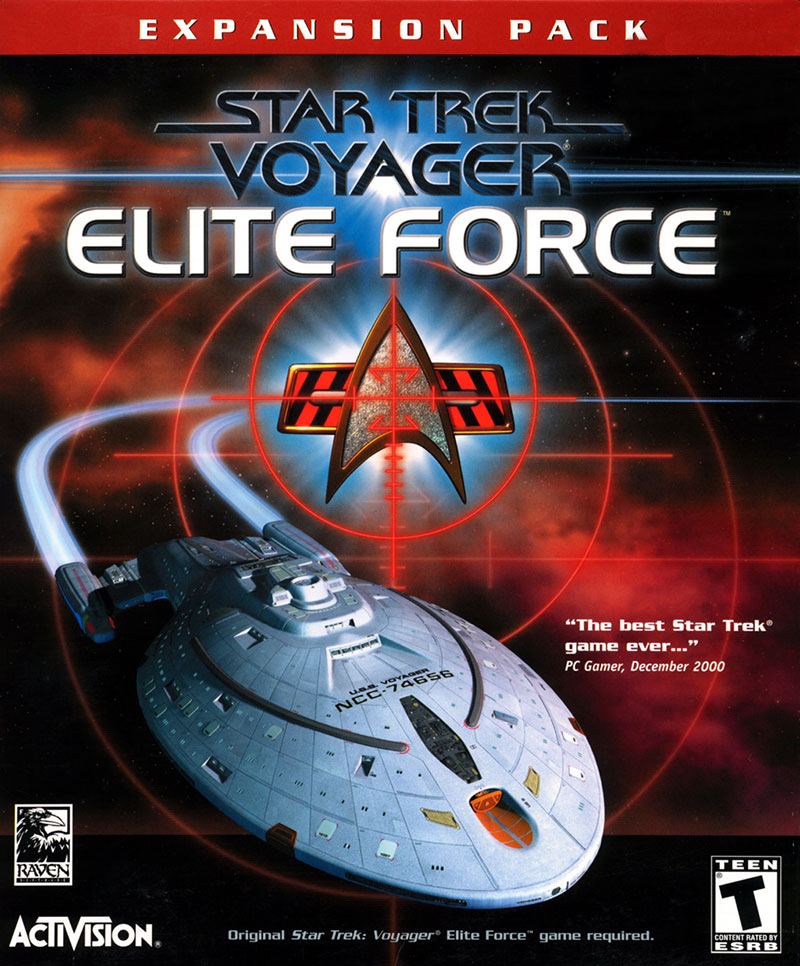
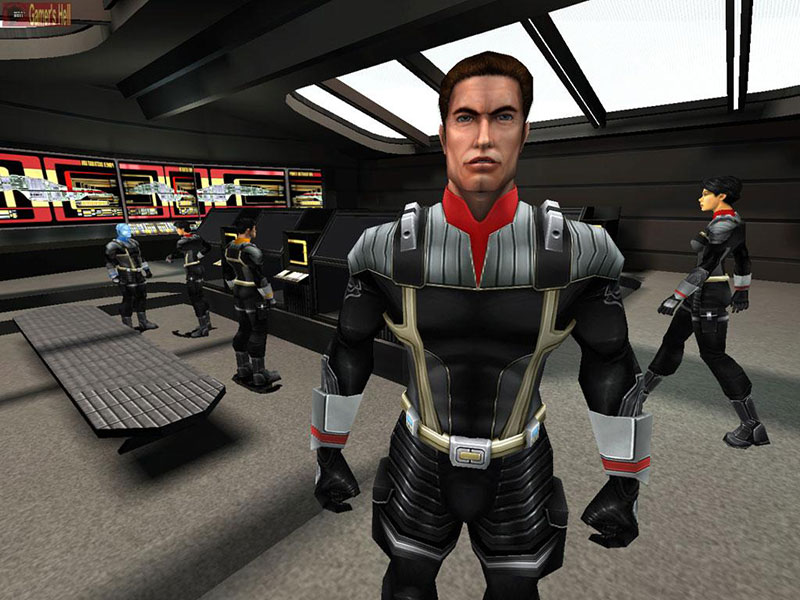
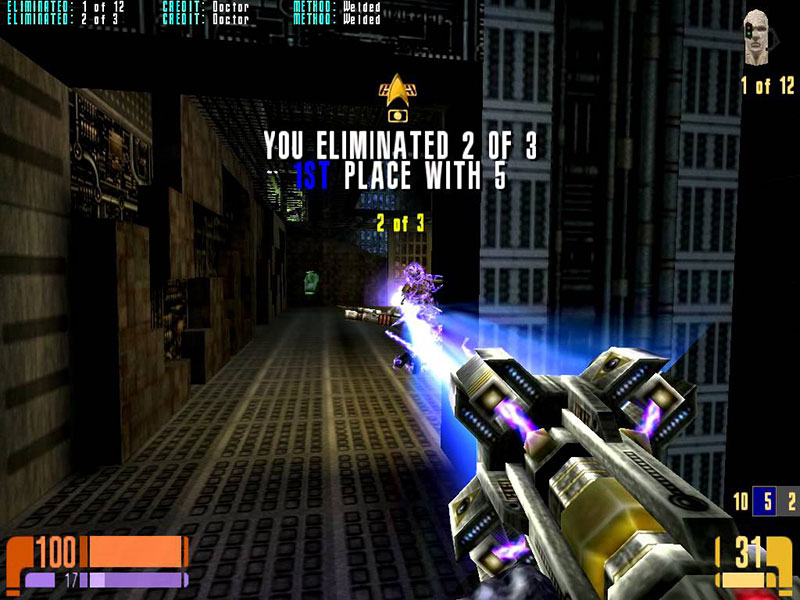
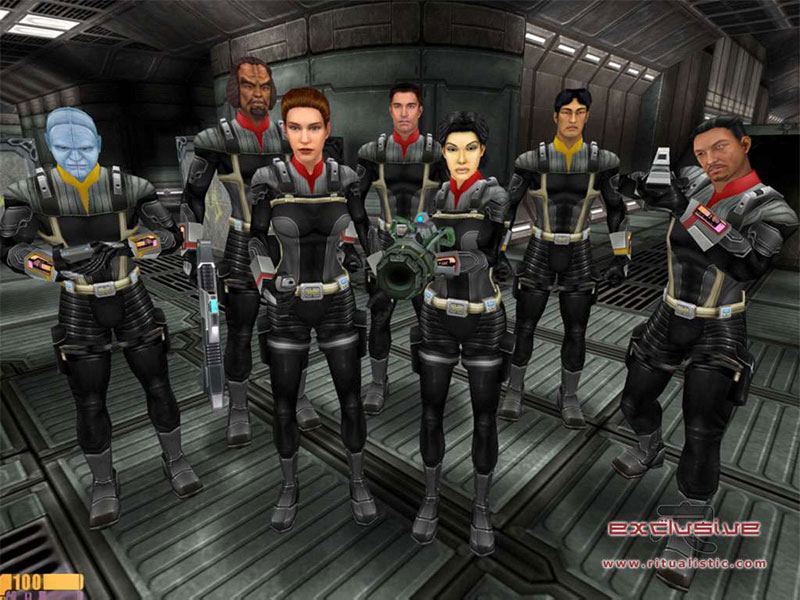
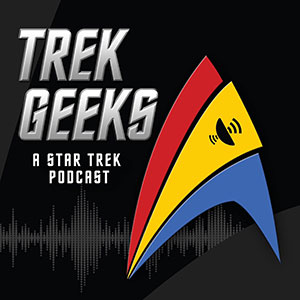





Smithian
November 5, 2017 at 12:52 pm
It’s a brilliant game. There are a lot of misses in the Trek video game pantheon, but right around the same time, DS9: The Fallen, Klingon Academy and both Elite Force games made a great impression. They also deserved greater success, which have been wonderful now, as especially popular games get updated and restored for current platforms.
My Mac OS long ago was updated beyond the ability to play Elite Force I or The Fallen, but it’s nice to still be able to fire up the PS2 and play the (unpatched and sorely missing Jeri Ryan) old EF version once in awhile.
Revisiting this storytelling approach to encompass all the series would be a dream these days.
CoolcatTerri
December 1, 2017 at 2:38 pm
I loved both Elite Force 1 and 2. I would greatly support a third game especially for VR. Please make this a reality.
Billy Beefcaked
December 7, 2017 at 2:21 pm
As fun as Elite Force was Elite Force II was one of the most fun 1st person shooters of the early 2000’s that I remember playing.
Not only was the game absolutely beautiful at the time, but Elite Force II gave us the first full imagined look of the decks on the Enterprise-E.
During that time we had one amazing Star Trek game after another with ST: Bridge Commander coming out the following year.
Such a shame Star Trek games died with Interplay going out of business in the mid-2000’s.
Daniel Brongers
August 22, 2019 at 8:31 pm
While not a big fan of VR, I would LOVE a third game is being made. Love these games, though I loved Elite Force 2 a bit more than I did with the original game. But, regardless, I don’t complain…